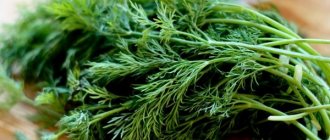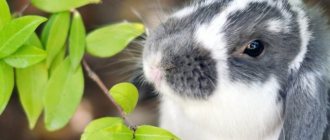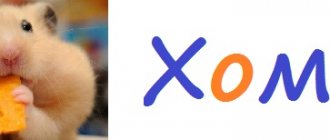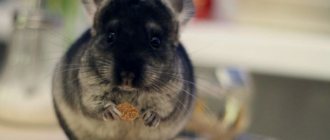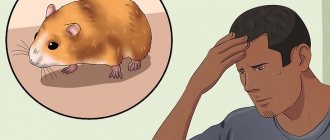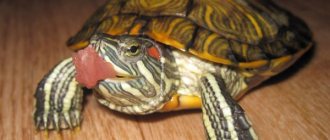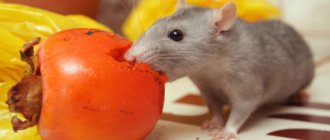Every owner of a decorative rodent is primarily concerned with the question: what do hamsters eat? If you decide to get a furry friend, ask what you can feed him. Small rodents are omnivores and will eat or hide in the pantry everything that catches their eye. Some owners feed their pets what they eat themselves. But this is very harmful for rodents. With such nutrition, the animal will not live long, very soon it will begin to have stomach problems, and everything will end sadly. To prevent this from happening, you need to know what you can feed your hamster, and what it is strictly contraindicated to give it.
What does a rodent eat in nature?
In the wild, the animal’s diet depends on its habitat. These are mainly grain crops, so rodents live, mainly in fields. In drier areas there is more dry food, in wetter areas there is more lush grass, leaves and other greenery. Rodents often raid places where grain, vegetables and other products are stored in rural houses and dachas. Rodents replenish their protein reserves by eating beetles, spiders, worms and caterpillars. They do not disdain the meat of another wounded small animal.
Various goodies
Grocery stores offer a variety of treats for hamsters. But before purchasing such food, you should make sure that there is no salt, sugar, flavor enhancers or flavorings in their composition. Such additives are a slow poison for rodents. Therefore, it is better to give preference to the following foods:
- Nuts.
- Banana chips.
- Dried fruits and dried vegetables.
- Sunflower seeds.
Sunflower seeds are a treat for your pet hamster.
What does a hamster eat at home?
The basic rule to follow when feeding your pet: you can give everything that he can find while living in the wild. The more natural products there are in an animal’s diet, the better for it.
The main types of foods to feed your hamster at home.
- Cereals - wheat, oatmeal, buckwheat, barley, corn. They can be given as whole grains, flakes, or as a porridge cooked in water. Sunflower and pumpkin seeds. Legumes, except red beans.
- Vegetables. Raw carrots, zucchini, pumpkin, bell peppers, eggplants, radishes, radishes. You can also give vegetables boiled without adding salt. It is better to lightly boil beets, broccoli, and cauliflower.
- Greenery, grass, tree leaves. Parsley, dill, lettuce, plantain, young nettle, clover. Young tree branches (apple, pear, birch, maple).
- Fruits and berries. Apples, pears, bananas, cherries, cherries, strawberries. They readily eat rose hips and currants. They love dried fruits (raisins, dried apricots, prunes, pieces of dried apples and pears). Occasionally you can give plums, apricots, and grapes. It is better to remove the seeds.
- Dairy products (low-fat and unsweetened kefir, cottage cheese, natural yogurt).
- Eggs, chicken, fish. Twice a week you can give a boiled egg, a piece of boiled lean chicken or boiled fish. Cook without salt and spices.
- It is better to buy bugs, worms and special insects at a pet store. Hamsters love earthworms, but if you dig them up in a flower bed, you can give your pet an infection.
Pet stores sell dry food for hamsters. It contains essential vitamins and minerals. Try different mixtures to find a food that your pet likes. Such pet food companies as Little One and Vitacraft have proven themselves well.
Home cooked food
According to some livestock breeders, their pets participate in joint family meals, eating the same thing as their owners. It’s nice to watch how the hamster “looks closely” at a large plate, but it is advisable that it does not contain dumplings or soup. Sweet and fatty foods are also harmful to rodents.
From home-cooked products, hamsters can be fed cereals cooked in water: rolled oats, buckwheat, millet, lentils. Without any fears, you can feed your pet low-fat cottage cheese, boiled eggs and boiled chicken breast.
Sometimes owners have a desire to pamper their rodent with a cookie, but to prevent such food from harming the pet’s health, only biscuits can be used. And even then, provided that it is unsweetened, unsalted and low-fat. If you really want to see how the hamster will hold the offered food in its paws, it is better to give it whole grain dietary bread without aromatic additives.
How much do pet hamsters eat?
Your pet is a nocturnal animal, you need to remember this. During the day he sleeps, and at night he eats, plays, exercises on a “simulator,” stores supplies, and sharpens his teeth. Therefore, the best option is to feed the baby twice a day. In the evening - the main meal, a hearty breakfast. In the morning, before bed, have a light dinner.
The amount of food that should be given to an animal at one time depends on the type and size of the rodent. When feeding twice a day, the Syrian is given one tablespoon of the feed mixture, and the Djungarian is given one teaspoon. Campbell's hamsters and other dwarf species feed similarly.
He will hide all the food that the hamster does not eat at one time in the pantry “for a rainy day.” Periodically review these supplies and remove perishable foods so that the animal does not get poisoned. Be sure to put something fresh in place of the “seized valuables”. Otherwise, the baby may become seriously stressed because all his reserves have disappeared, and he will die of hunger in the long, cold winter.
Vitamins for pets
Store-bought mixtures for hamsters contain all the necessary vitamins and microelements. However, in some cases it is necessary to introduce them artificially in order to protect pets from the development of infectious or viral diseases.
Vitamins for hamsters are an important component in their diet.
Vitamin complexes with different compositions are available for sale. However, you cannot choose them yourself without first consulting a veterinarian. The specialist will advise the appropriate complementary foods and dosage based on the age and condition of the pet’s body.
How and what do rodents drink?
If there is a large amount of fresh, juicy vegetables, fruits and herbs in the diet, the homa may drink very little or not drink at all. For example, cucumbers are 90% water. However, there should always be fresh water in the cage. The water in the drinking bowl should be changed at least once a day. If debris from the cage gets into the water bowl, the water must be changed immediately so that the animal does not get poisoned. There are several types of special closed drinkers on sale that prevent tipping over and contamination of the water in the container.
Vitamin storehouse
Hamsters readily eat vegetables and fruits. And if in the selection of a vegetable diet it is necessary to exclude potatoes, cabbage, onions, garlic and zucchini, then when choosing fruits to replenish the supply of vitamins in the body of the “fluffy”, you must adhere to some rules:
- It is advisable to feed hamsters not with exotic fruits, but with locally grown fruits;
- fruits that are too sour are dangerous for “fluffies”;
- fruits must be selected that are ripe, but without rot;
- Such food should be present in your pet’s diet no more than 1-2 times a week.
In addition, the diet of Djungarian hamsters is somewhat different from how the “Syrians” eat. Dwarf species are more prone to diabetes, so they should prepare fruit dessert less often than Syrian rodents.
The diet of the Djungarians is slightly different from the diet of the Syrians. Dzungarians are prone to diabetes, so they can receive fruit much less frequently than Syrians.
What fruits can pets eat?
Fruits that hamsters eat at home should be fresh and ripe, but without rot. It is better if it is local and seasonal fruits. Citrus and various tropical fruits should not be given. The bones must be pulled out so that the baby does not choke. Sour fruits are contraindicated.
If you are training a baby or teaching him, for example, to use a running wheel, you need to stock up on “goodies.” Sunflower seeds or cookies are suitable for this purpose. Sometimes you can feed your baby a banana. But since rodents constantly need to wear down their teeth, they must eat more solid food. In addition, bananas contain a lot of sugar.
Repeat “fruit” days no more than 1-2 times a week.
Has the hamster already said “thank you” to you?
Knowledge without practice is useless ballast. Right now, tell your family to stop stuffing food into the poor animal all day long. And if your hamster learns to talk, the first thing he will say to you is: “Thank you very much!”
Come back! I'll miss
